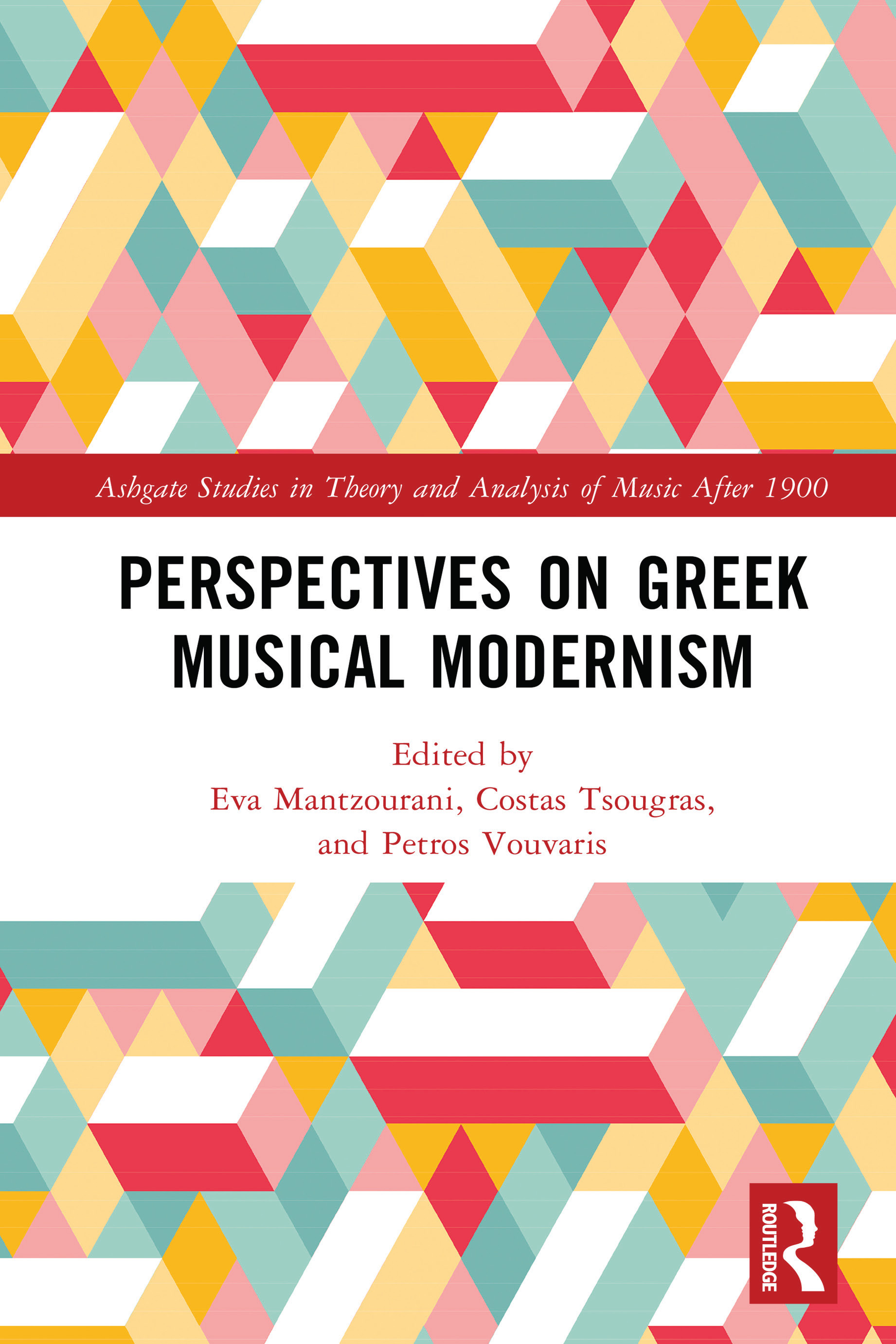
Author(s): Valia (Stavroula) Christopoulou
University of Athens
Abstract or Summary:
Yorgos Sicilianos was one of the most prominent figures of post-war modernism in Greece. The chapter illustrates two phases in the development of Sicilianos’ musical style, broadly corresponding to the two main tendencies involved in the evolution of his compositional and aesthetic outlook over the years. The first tendency draws on neoclassicism, as exemplified in his Concerto for Orchestra of 1954, and pertains to the development of a personal serial technique, as exemplified in his Fourth String Quartet of 1967. The other tendency, connected to the aesthetics of the fragmentary and pluralism, is discussed with reference to such works as Episodes II of 1971, Epitaph of 1971, and Etudes compositionnelles of 1974. The chapter also explores Sicilianos’ attempt to reconcile his modernist orientation with his quest for a national musical identity and with his interest in ancient Greek tragedy and the classical past, focusing, in particular, on Epiklesis of 1968. In so doing, it unearths an underlying characteristic of his compositional practice that remained unchanged throughout his creative course, namely the fact that, although he experimented with a wide range of compositional techniques, he did not commit to any specific one of them, blurring the line between what is frequently deemed as modernist or postmodernist aesthetics.
*Abstract from the publisher’s website
Year of Publication: 2025
Published/Presented: Perspectives on Greek Musical Modernism
Page(s): 161-182
Language(s): English
Access Type: Preview
# |
Writer's Page |
||||
|---|---|---|---|---|---|
1 |
 |
Valia (Stavroula) Christopoulou |
University of Athens |
Author |
# |
Work Page |
|||||||
|---|---|---|---|---|---|---|---|---|
1 |
 |
YSC73 |
Etudes Compositionnelles |
for Piano |
32 |
Piano |
||
2 |
 |
YSC72 |
Epitaph |
for Mixed Choir, Six Women's Vocal Ensemble, Children's Choir, Narrator and Orchestra |
31 |
3233-4331, Timpani, Percussion (3 Performers: Suspended Cymbal, Cymbals, Medium Gong, Large Tam-Tam, Flexatone, Maracas, Claves, Clapper, Metallophone or Glockenspiel, Crotales, Xylophone, Vibraphone, Tubular Bells, Bass Drum), Harp, Piano, Strings, Choir, Children’s Choir, Narrator, 4 Female Voices |
||
3 |
 |
YSC71 |
Episodes ΙΙ |
for mixed choir, tape and three performers |
30 |
2 Choirs, Piano, Double Bass, Percussion (3 Suspended Cymbals – large, medium, and small, Large Tam-Tam, Small Tamtam, Flexatone, 5 Temple Blocks, Woodblock, Bass Tom, Bells, Tubular Bells, Crotales, Timpani, Xylophone, Vibraphone, Maracas, Claves), Tape |
||
4 |
 |
YSC69 |
Epiklesis |
29A |
Harp, Guitar, Celesta, 2 Pianos, Glockenspiel, Xylophone, Vibraphone, Bass Drum, Tamtam, Suspended Cymbal, Tubular Bells, Tenors, Basses, 4 Sopranos |
|||
5 |
 |
YSC68 |
String Quartet No. 4 |
28 |
String Quartet (Violin I, Violin II, Viola, and Cello) |
|||
6 |
 |
YSC46 |
Concerto for Orchestra |
12 |
2222-4331, Timpani, Bass Drum, Cymbals, Triangle, Strings |
# |
Item Page |
|||||||||
|---|---|---|---|---|---|---|---|---|---|---|
1 |
 |
Perspectives on Greek Musical Modernism |
Kostas Chardas, Valia Christopoulou, Dimitris Exarchos, Theodore Karathodoros, Eva Mantzourani, Giorgos Sakallieros, Yorgos Sicilianos, Makis Solomos, Danae Stefanou, Ioannis Tsagkarakis, Costas Tsougras, Panos Vlagopoulos, Petros Vouvaris |
Routledge |
2025 |
Musicology |
Edited Volume |
English |
161-182 |